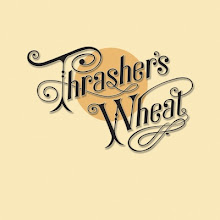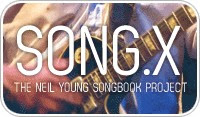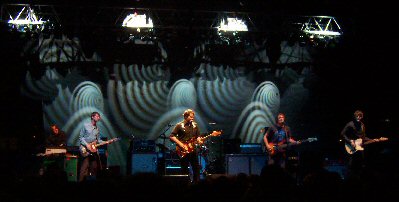REVIEW: "Before and After" by Neil Young | The Flying Scotzman
RELEASE DATE: Dec 8
Neil Young’s new album, Before and After—a record of vintage songs played in concert in 2023, but sounding very much like new songs played solo in the studio—is released today (Dec 8).
But before we talk about Before and After, let’s talk about Harry Styles.
(I write these words fully aware that I’ve just lost 50% of the readers here. Stick with me, please!).
Earlier this week, I was listening to one of Harry’s songs, called As It Was (648 million YouTube views, and counting!). It’s the first time I’ve really listened to one of Harry’s songs.
As It Was is ultra-catchy. It’s the kind of song you’ll find yourself humming three weeks after you heard it. It’s fun and dreamy-sounding and colourfully produced.
The song is like a musical piece of candy. It ditches nutrition in favour of a sugar rush.
Sugar is an addictive ingredient, and if you can write and produce this sort of pop music, it’s possible you’ll be the one (probably with the help of AI) to capture the hearts of the mass-market with your tunes.
But there’s no point going half-way with this. Nobody listens to music that’s *only* redeeming feature is that it’s almost catchy. You need to go to the extreme, or not at all.
If not, then a more compelling option might be to write the sort of songs that you’ll find on Neil Young’s Before and After.
Oh, they’re not all heavyweights. And some are presented in a context that doesn’t necessarily flatter them. The previously unreleased If You Got Love, for instance, is the kind of ditty that perhaps demands full-on production. Without that, it comes across as neither here nor there. (Though that gutsy-sounding pump organ brings a smile to the face, doesn’t it?)
But intentionally or not, Neil has mostly chosen songs that proclaim “You know what? I’m one of the best songwriters in the world, and here’s an album’s worth of proof”.
(That’s not an actual quote, of course. That’s me taking this rather modest, delicate and self-effacing record of musical gems and injecting it with some artificial boastful swagger, to demonstrate a point.)
The first clue is that Neil comes out the gate firing with I’m the Ocean. Probably the most impressive track of the 90s — if we define an impressive song as one built around a substance-packed lyric. To use a perverse analogy, It’s the musical equivalent of beginning your war with a barrage of heavy artillery.
(Again, this track is sort of catchy…. but it’s not catchy enough to rest on its laurels. It needs an extraordinary and far-reaching lyric and concept and performance, and it delivers one right on cue.)
Then Homefires, then Burned. Songs harvested from all through the years, united by their generous spirit and musical excellence.
Musically, we begin in Thrasher territory, here. (By that, I mean the song… not the boss of this blog!). Neil is playing 12-string guitar, amplified in stereo to create the captivating illusion of two guitars in harmony. He’s also singing through a punchy-sounding dynamic wireless mic that allows for the obliteration of most of the noise from the audience.
This is broadly the same sort of sound you’ll remember from the first two tracks of Rust Never Sleeps. Later on in Before and After, Neil moves on to 6-string acoustic guitar, piano, pump organ, Old Black electric guitar. But it still feels like a record that’s a stablemate of the Boarding House recordings from 1978.
Two otherworldly piano songs from 1994’s Sleeps with Angels add layers of texture, visitors from another place and time.
My first (not-set-in-stone) impression is that I don’t like the concept of stringing all the tracks together without gaps. It doesn’t flatter the music, and it never really gives each song chance to breathe or to sink in. As listeners, we need gaps to give our imaginations space to breathe, too.
(Similarly, notice how I’ve split this rant you are now reading into paragraphs. It would be harder to read if I took out the spaces between the paragraphs, wouldn’t it?).
Neil describes the experience as a “music presentation (that) defies shuffling, digital organisation, separation. Only for listening. That says it all.”
Opinion: It says it all only if your first language is Gobbledegook. The translated version (via the Scotzman jargon decoder) is that Neil heard Bob Dylan’s Shadow Kingdom and decided to make his own record to the same blueprint. And although Bob gets points for being quicker off the mark, Neil gets credit for making a record that ripples with present-day spirit and vitality.
Bob’s record is engagingly (almost hypnotically!) performed, but ultimately much of it feels like a history lesson. What inspires Bob today? What makes him feel alive and grateful, or inspired to make the world a better place, and want to share that generous feeling with us? The answer to that question may be where his most engaging music still resides. Perhaps it’s within the sound itself. I don’t know.
Bob fandom, meanwhile, is full of disciples who are more interested in worshipping than living. And when all you’ve got to do all day is compare “fascinating” differences between 250 versions of Key West or Black Rider, it’s no wonder your own spirit starts to stagnate.
Neil’s record is melancholy, but it has fire in its belly, too. This record isn’t a history lesson. (Maybe it’s a lesson from history about how to live today.)
Good. Because the truth is we don’t listen to this sort of so-called “Dad rock”, “Legacy Artist” stuff (rather than Harry Styles or whoever else is popular) just to have some grumpy old git inflict his dirges on us whilst swanning around in a stretch limo and playing at being a rock star (even if the game lasts 80+ years).
I listen more selfishly than that. I listen because this music inspires me to live my life more fully. That’s what generous music does.
And that’s what Neil’s music does.
One of the most stirring vocal performances here comes during When I Hold You in My Arms:
“Well the older generation, they got something to say
But they better say it fast, or get out of the way”
Maybe the reason Neil sounds fired-up here is that although he knows he’s now one of the older generation, he’s also still (very literally) Mr Young. There’s a tension between getting older and staying spiritually young. A tightrope many of us will have the opportunity to walk, if we want to. We could perhaps take lessons from this man.
The record closes with Don’t Forget Love, which holds its own amongst giant tracks from years’ past. Neil’s voice does not possess the raw power it once had, at least not on this record. But it has lost none of its expressiveness or nuance.
Before and After isn’t what many people will call a “major record” or an “essential record”… nor does it adventurously explore new territory like 2022’s World Record. Any claims it could make to originality in its “one long track” concept would be dubious.
But it’s a compelling listen precisely because it’s built on the strong foundation of stellar songs and earnest performances. Coming out onstage *firing*, armed with powerful songs and a dynamic attitude, might not be very original. But it’s certainly to be applauded.
Scotsman.
Thanks so much for the review Scotsman!
Also, be sure to check out The Flying Scotzman over on Patreon writing about the remarkable music of Neil Young.
More on Neil Young Signing Copies of New Album"Before and After".
photo by The Reverend Reiderson
Labels: album, neil young, reviews















































 Human Highway
Human Highway

















 Concert Review of the Moment
Concert Review of the Moment





 This Land is My Land
This Land is My Land

 FREEDOM In A New Year
FREEDOM In A New Year









 *Thanks Neil!*
*Thanks Neil!*




![[EFC Blue Ribbon - Free Speech Online]](http://www.thrasherswheat.org/gifs/free-speech.gif)











 The Unbearable Lightness of Being Neil Young
The Unbearable Lightness of Being Neil Young Pardon My Heart
Pardon My Heart



 "We're The Ones
"We're The Ones  Thanks for Supporting Thrasher's Wheat!
Thanks for Supporting Thrasher's Wheat!




 This blog
This blog 
 (... he didn't kill himself either...)
#AaronDidntKillHimself
(... he didn't kill himself either...)
#AaronDidntKillHimself









































































 Neil Young's Moon Songs
Neil Young's Moon Songs




 Civic Duty Is Not Terrorism
Civic Duty Is Not Terrorism Orwell (and Grandpa) Was Right
Orwell (and Grandpa) Was Right


 What's So Funny About
What's So Funny About 


